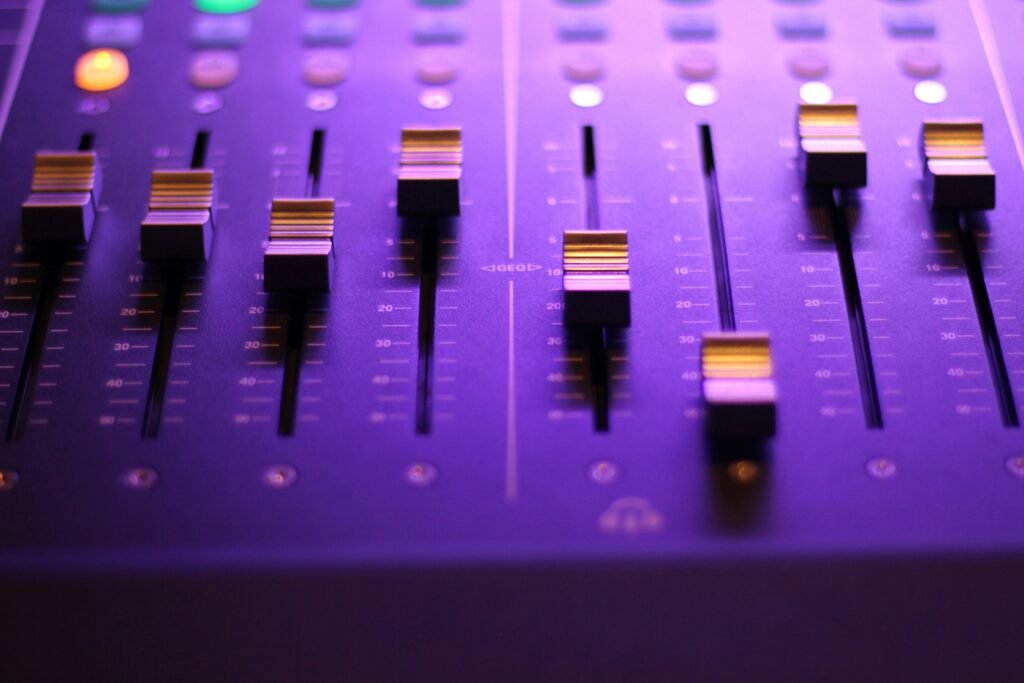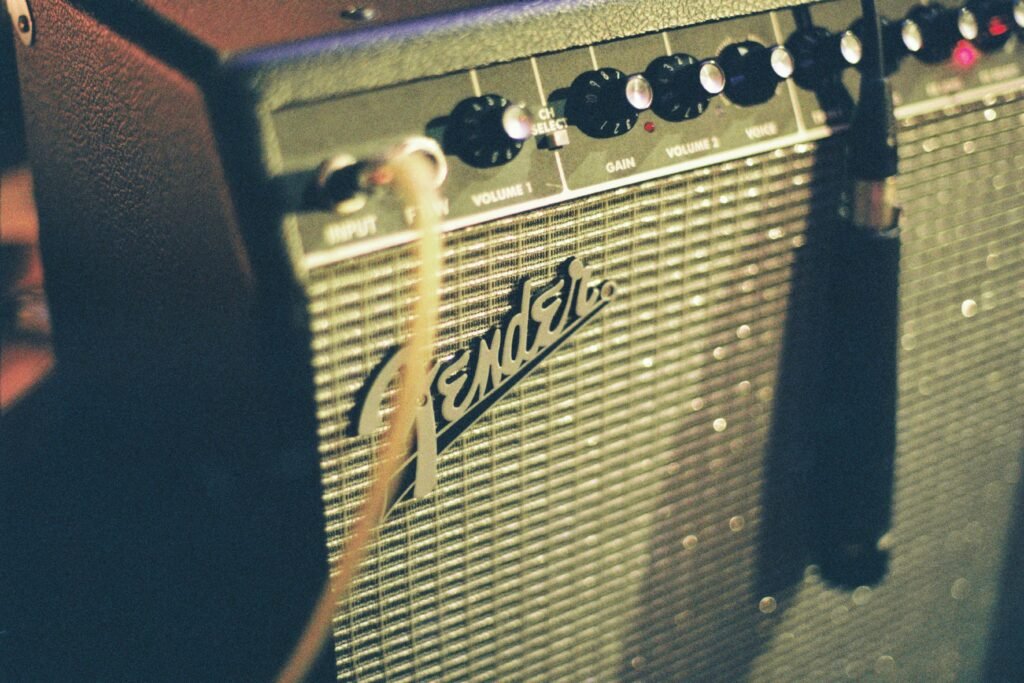Billie Eilish’s Hit Me Hard and Soft emerges as both a continuation of her signature, genre-defying style and a step forward in emotional and sonic complexity. Coming off the success of Happier Than Ever (2021), which explored themes of isolation, self-doubt, and fame, Eilish’s third studio album seeks to deepen her introspective storytelling while pushing new boundaries in sound. The album blends soft, minimalist elements with sharp, cutting production, in a deliberate contrast that matches its title.
While her previous records, especially When We All Fall Asleep, Where Do We Go? (2019), showcased a dark, eerie atmosphere with playful vocal delivery, Hit Me Hard and Soft feels more expansive, emotionally raw, and complex. There’s a maturity in her voice, which she herself has noted, reflecting the personal and artistic growth she’s undergone since her earlier work.
Artistic Intentions
Eilish has been clear about her intent for this album: she wants listeners to experience it as a complete body of work, rather than cherry-picking singles. This cohesive vision reflects her belief that Hit Me Hard and Soft is a “family” of songs, each piece interconnected, aimed at delivering an immersive emotional journey. The album reflects her continued collaboration with her brother Finneas, whose production amplifies the juxtaposition of softness and intensity, reinforcing the thematic balance of vulnerability and resilience.
Within the broader pop landscape, Hit Me Hard and Soft feels both timely and timeless. At a moment when many artists are leaning into maximalism, Eilish’s approach to pairing vulnerability with stark, experimental production provides a quieter, but no less impactful, alternative. However, while this restraint is intentional, some listeners might find parts of the album’s minimalism veering into moments of opacity or emotional distance, leading to a slightly polarizing listening experience.
Sonic Exploration

The production of Hit Me Hard and Soft stands as one of the album’s most defining aspects, embracing a blend of minimalism and experimental textures. Finneas, Billie Eilish’s long-time collaborator and brother, continues to shape the sonic identity of her music, and in this album, he leans heavily into creating atmospheres that are sparse yet meticulously crafted. The production often alternates between crisp clarity and lo-fi grit, allowing space for Eilish’s vocals to be the focal point. This juxtaposition mirrors the album’s thematic balance of vulnerability and power, ensuring that each sound and silence feels intentional.
Musical Arrangements
The arrangements on this album are innovative without being overwhelming. Eilish’s vocals are often layered in whispers and harmonies, creating an intimate, ethereal effect that feels close and confessional. Tracks like “Chihiro” and “L’Amour de Ma Vie” feature stripped-back instrumentals—delicate piano or simple synth lines—that build tension through subtlety. In contrast, songs like “Lunch” introduce more abrasive electronic elements, punctuating the softer moments with bursts of energy. This dynamic range is key to the album’s emotional rollercoaster, using both quiet and chaos to great effect.
Genre Elements
In terms of genre, Hit Me Hard and Soft continues Eilish’s tradition of defying categorization. The album pulls from a variety of influences—electropop, alt-pop, lo-fi indie, and even ambient music—blending them in ways that feel seamless yet distinctive. While there are elements of mainstream pop production, the album never fully commits to any genre conventions. Instead, it plays with expectations: synths appear where acoustic guitar might be expected, beats drop out just as a hook is building, and vocal effects push Eilish’s voice to the forefront, only to have it melt back into the mix. This genre-blending, while exciting, may also feel disjointed to listeners who crave more structured compositions.
Lyrical Analysis

At its core, Hit Me Hard and Soft explores themes of emotional vulnerability, identity, and introspection. Throughout the album, Billie Eilish delves into complex feelings surrounding love, loss, self-awareness, and the weight of fame. The lyrics, much like the album’s title, oscillate between moments of fragility and resilience. In songs like “L’Amour de Ma Vie” and “Chihiro,” themes of heartbreak and existential questioning dominate, while other tracks reflect on the pressures of navigating life in the public eye, similar to her previous albums. This time, though, there’s a deeper sense of personal reflection, as Eilish seems to focus more inwardly.
Lyrical Depth
The lyrics tend to blur the line between straightforward narrative and abstract expression, leaving much open to interpretation. Eilish often uses fragmented imagery and sparse word choices to convey emotions indirectly, allowing listeners to project their own experiences onto the songs. This can be seen in “Birds of a Feather,” where metaphorical language is used to reflect on companionship and betrayal, leaving the lyrics open to multiple readings. While this abstractness adds a poetic layer, it might also alienate listeners who prefer more direct storytelling.
Emotional Impact
In terms of emotional impact, the lyrics of Hit Me Hard and Soft contribute significantly to the album’s introspective and haunting mood. Eilish’s ability to evoke deep sadness and contemplation through subtle, almost whispered lyrics draws listeners into her emotional world. Tracks like “Lunch” channel a mix of melancholy and frustration, capturing moments of disillusionment. However, the overall tone of the album is more subdued than her previous works, which could make the emotional resonance feel less immediate or cathartic for some. While the album’s lyrics are undeniably thought-provoking, they don’t always deliver the same punch as her more direct earlier material.
Cohesion and Flow

The cohesion of Hit Me Hard and Soft lies in its deliberate balance of contrasting emotions and sounds, with each track designed to complement the others in both mood and thematic weight. The album’s progression is subtle but effective, beginning with softer, introspective songs that gradually build tension and complexity before returning to more subdued, reflective tones. This ebb and flow creates a sense of emotional journey, even though the narrative structure isn’t always explicit. The album’s sequencing feels intentional, with songs like “Lunch” serving as a tonal pivot between the more ethereal “L’Amour de Ma Vie” and the emotionally charged “Chihiro,” allowing for shifts in mood without feeling jarring.
Thematic Consistency
Thematic consistency is one of Hit Me Hard and Soft’s strengths. Throughout the album, the dualities of vulnerability and strength, clarity and ambiguity, are constantly in play, reflected both in the lyrical content and the musical arrangements. This duality extends to the production as well, with shifts between minimalism and dense, textured soundscapes helping to maintain a consistent emotional tone. Even when the album experiments with different genres—such as the ambient electronic touches in “Birds of a Feather” or the more abrasive pop elements of “Lunch”—the overarching themes of introspection and emotional tension tie these tracks together.
However, there are moments where the album’s flow could be perceived as too understated. While the seamless transitions between tracks create a cohesive listening experience, this consistency may also make some songs blur into one another. For listeners craving standout moments or a more dynamic narrative arc, the album’s subdued flow might feel overly restrained. While the emotional peaks and valleys are there, they are often subtle, which can leave some tracks feeling like they lack the distinct identity needed to make them truly memorable.
Standout Tracks and Moments
While Hit Me Hard and Soft is designed to be experienced as a cohesive body of work, a few tracks stand out for their innovation, emotional resonance, and artistic depth.
Chihiro
One of the most notable is “Chihiro”, which captures the heart of the album’s delicate balance between vulnerability and strength. The track features a sparse arrangement that gradually builds in intensity, driven by Eilish’s breathy, intimate vocals. The rawness in her delivery, combined with subtle production flourishes, gives the song a haunting quality. This track is a perfect example of how Billie Eilish can evoke deep emotion through minimalism, allowing silence and space to speak as loudly as the music itself.
Lunch
Another highlight is “Lunch,” one of the more sonically adventurous tracks on the album. Its shifting textures and sharp, electronic beats create a jarring contrast to the quieter moments in the record. The song’s production, which veers into experimental pop, allows Eilish to showcase a more frustrated and disillusioned tone, adding variety to the album’s emotional palette. It’s in moments like these that Hit Me Hard and Soft breaks free from its introspective shell, giving listeners a glimpse of Eilish’s edgier, more confrontational side.
L’Amour de Ma Vie
“L’Amour de Ma Vie” is another standout, notable for its poetic lyricism and tender delivery. The song’s simplicity allows Eilish’s voice to shine, and the stripped-back piano arrangement emphasizes the emotional depth of the lyrics, which reflect on love and heartbreak. The vulnerability in this track serves as a thematic anchor for the album, encapsulating the blend of softness and emotional power that defines the record.
Memorable Moments
In terms of memorable moments, one that stands out is the extended outro of “Birds of a Feather.” Here, the track slowly disintegrates into ambient soundscapes, with layers of Eilish’s vocals swirling into a dreamlike fade. This use of space and decay highlights her knack for creating atmosphere, leaving listeners in a contemplative state. Another striking moment comes in “Chihiro,” where a sudden shift in dynamics—from whisper-soft verses to a swelling, almost cinematic chorus—captures the album’s overarching theme of contrast between quiet reflection and intense emotion.
Artistic Contribution and Innovation

Hit Me Hard and Soft holds a unique place in Billie Eilish’s discography, as well as in the broader pop and alternative music landscapes. Eilish has already established herself as a genre-defying artist, and with this album, she continues to challenge conventional pop expectations. Rather than leaning into commercial trends like many of her peers, Eilish opts for a more introspective, experimental approach that pushes the boundaries of what mainstream pop can sound like. The album’s minimalist production and genre-blending qualities stand in contrast to the maximalist, hyper-produced sound that dominates much of today’s music industry.
Innovation
One of the most innovative aspects of Hit Me Hard and Soft is its sonic restraint. In an era where overproduction and bombastic hooks are the norm, Eilish and Finneas take the opposite approach, creating atmospheric, lo-fi arrangements that feel almost skeletal in their simplicity. This starkness allows for a heightened focus on emotional texture, and the result is an album that feels more intimate and immersive than much of what’s currently in rotation. By keeping the production sparse, Eilish challenges listeners to engage with the subtleties of her music, creating a mood that’s as much about what’s unsaid as what is expressed directly.
Additionally, Eilish continues to innovate by blending genres in ways that feel organic and unforced. Hit Me Hard and Soft touches on elements of electropop, ambient music, and indie, all while maintaining a consistent emotional tone. Tracks like “Chihiro” blend electronic beats with haunting melodies, while “Birds of a Feather” dips into atmospheric indie-folk, showing her willingness to explore without ever fully committing to a singular genre. This fluidity keeps the album from being pigeonholed into any one musical category, making it appealing to a wide range of listeners while still maintaining an air of artistic credibility.
In terms of thematic innovation, the album’s emphasis on contrasts—between hard and soft, strength and vulnerability—adds a new layer to Eilish’s storytelling. Where previous albums were more overt in their themes of fame, anxiety, and personal struggle, Hit Me Hard and Soft delves into these ideas with more nuance and subtlety. The exploration of duality in both sound and theme creates a sense of tension that is fresh and engaging, even if it might be too understated for some fans who prefer more direct expression.
Closing Thoughts
Hit Me Hard and Soft reinforces Billie Eilish’s position as an artist dedicated to introspection and sonic experimentation. The album’s strengths lie in its ability to balance contrasting emotional states, with subtle production choices that allow listeners to sit with the tension between fragility and power. Tracks like “Chihiro” and “L’Amour de Ma Vie” showcase Eilish at her most vulnerable, while moments like “Lunch” push her sound into more adventurous territory, giving the album bursts of energy amidst its quieter moments. The thematic cohesion and delicate exploration of emotion offer an immersive listening experience, one that rewards patience and careful attention.
However, while the album has plenty to admire, it also has its weaknesses. The subdued production, while intentional, can sometimes make tracks blur into one another, reducing the impact of individual songs. For some listeners, the lack of bold, standout moments may lead to a feeling of monotony. There’s also a sense that, despite its innovations, Eilish is treading familiar ground. Many of the emotional and sonic themes explored here echo those from her previous albums, and while she refines her approach, there’s a sense of plateauing in her artistic development. Hit Me Hard and Soft doesn’t feel like a significant departure or evolution from Happier Than Ever, but rather a continuation of the same introspective formula.
Official Rating
Given its strengths and shortcomings, I would rate the album 7/10. It’s a solid, cohesive work that showcases Eilish’s talent for creating atmosphere and emotional depth, but it lacks the bold innovation or progression that might have taken it to the next level. For an artist as young and influential as Billie Eilish, there’s still an expectation of growth, and Hit Me Hard and Soft feels like it falls just short of pushing her artistry forward. The subtlety and restraint that define the album may resonate deeply with fans who appreciate her reflective style, but for those looking for more growth or evolution, it may feel like a moment of artistic stagnation.
